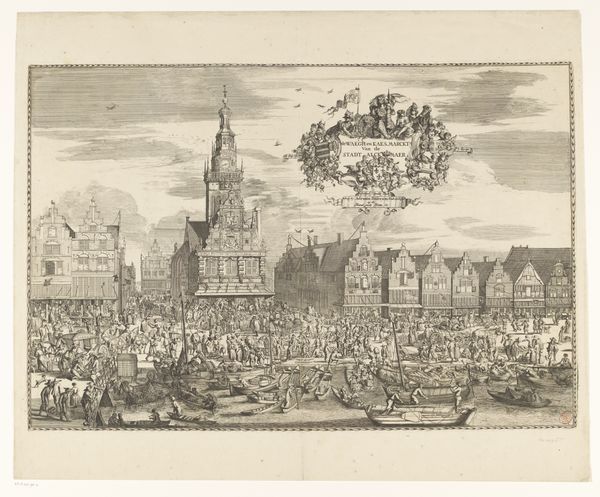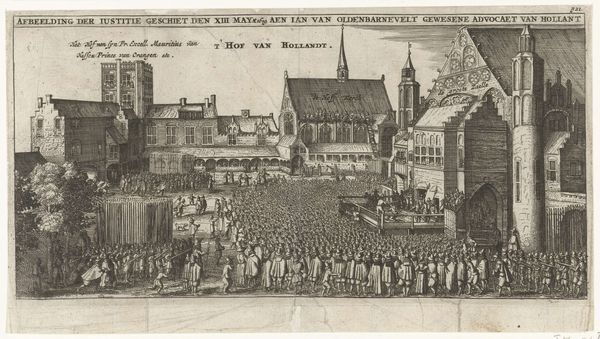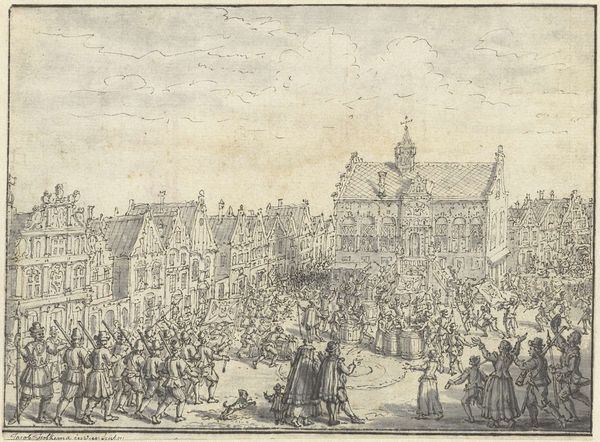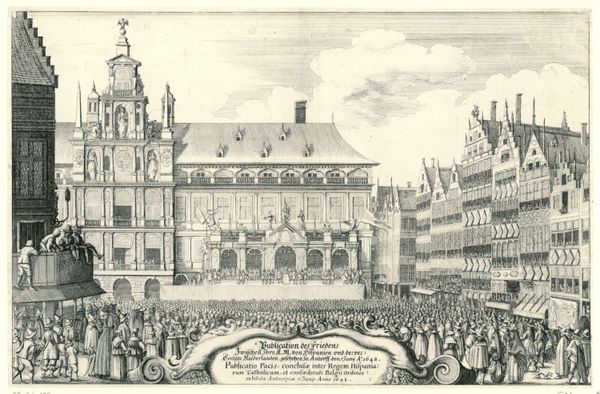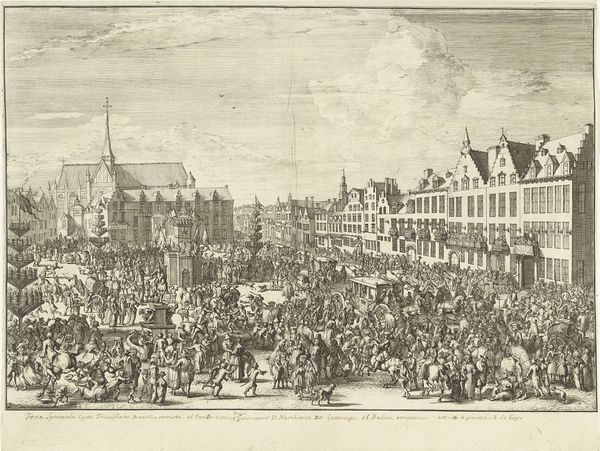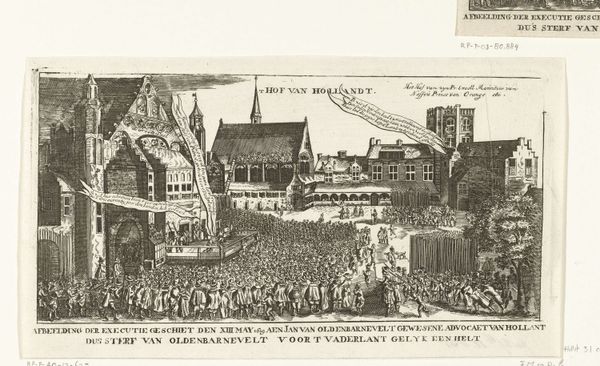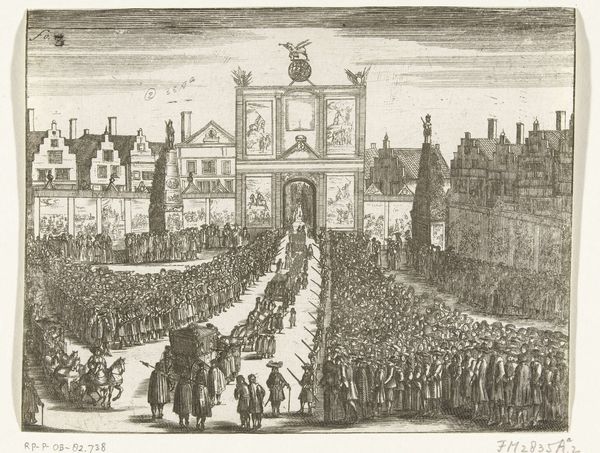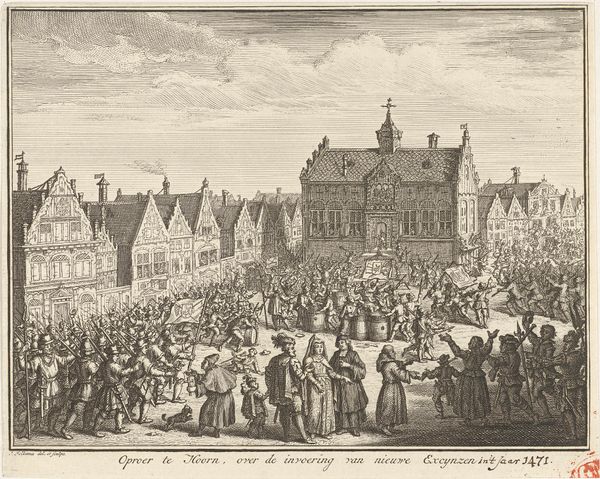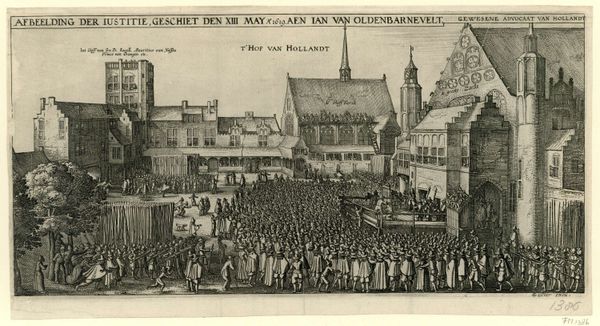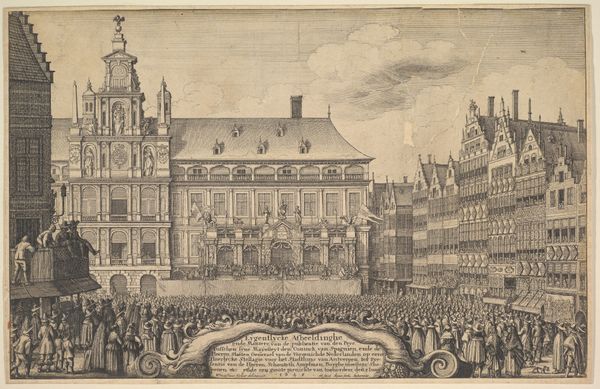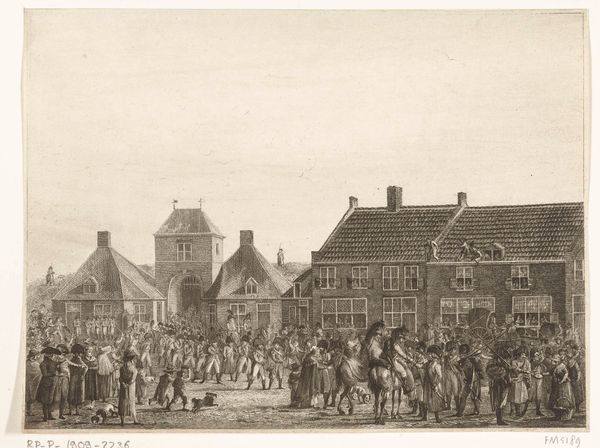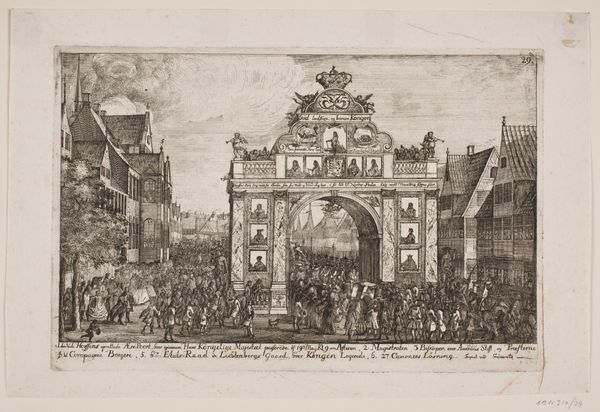
print, engraving
#
narrative-art
#
baroque
# print
#
group-portraits
#
cityscape
#
history-painting
#
engraving
Dimensions: height 202 mm, width 371 mm
Copyright: Rijks Museum: Open Domain
Editor: This is Claes Jansz. Visscher’s 1619 engraving, "The Beheading of Johan van Oldenbarnevelt," a really striking historical scene. The sheer density of the crowd is impactful, everyone seems to be tightly packed together. How do you interpret this piece, considering the way it depicts such a public event? Curator: This print is less about high art and more about the social production of a very specific, politically charged image. Consider the means of production – engraving allows for mass dissemination, creating a shared visual culture. It begs the question: who was meant to consume this image, and what narratives did it reinforce through this widespread circulation? Editor: That's a good point. So, rather than focusing on Visscher’s artistic intention, we should be thinking about the print's role in shaping public opinion. Do you think the choice of engraving as a medium was deliberate in that respect? Curator: Absolutely. Think about the labor involved, the deliberate crafting for duplication. This wasn't just an artistic statement; it was a political tool manufactured for consumption. The details are carefully etched, creating a clear, reproducible narrative suitable for a broad audience that has a lot of impact on shaping social thinking. Editor: So the "craft" of creating prints like this, served specific social and political functions? I've always looked at it more as an historical record. Curator: Precisely! The artist’s hand is secondary to the wider processes of production, dissemination, and the social meanings generated by these images in Early Modern Netherlands. Looking closely, we see how material culture reflects broader historical forces. Editor: I’m beginning to think about art in a new light, this helps me see how embedded the production of art is with broader economic and political things. Curator: Exactly, thinking materially offers a fresh and richer way to see this work.
Comments
No comments
Be the first to comment and join the conversation on the ultimate creative platform.
